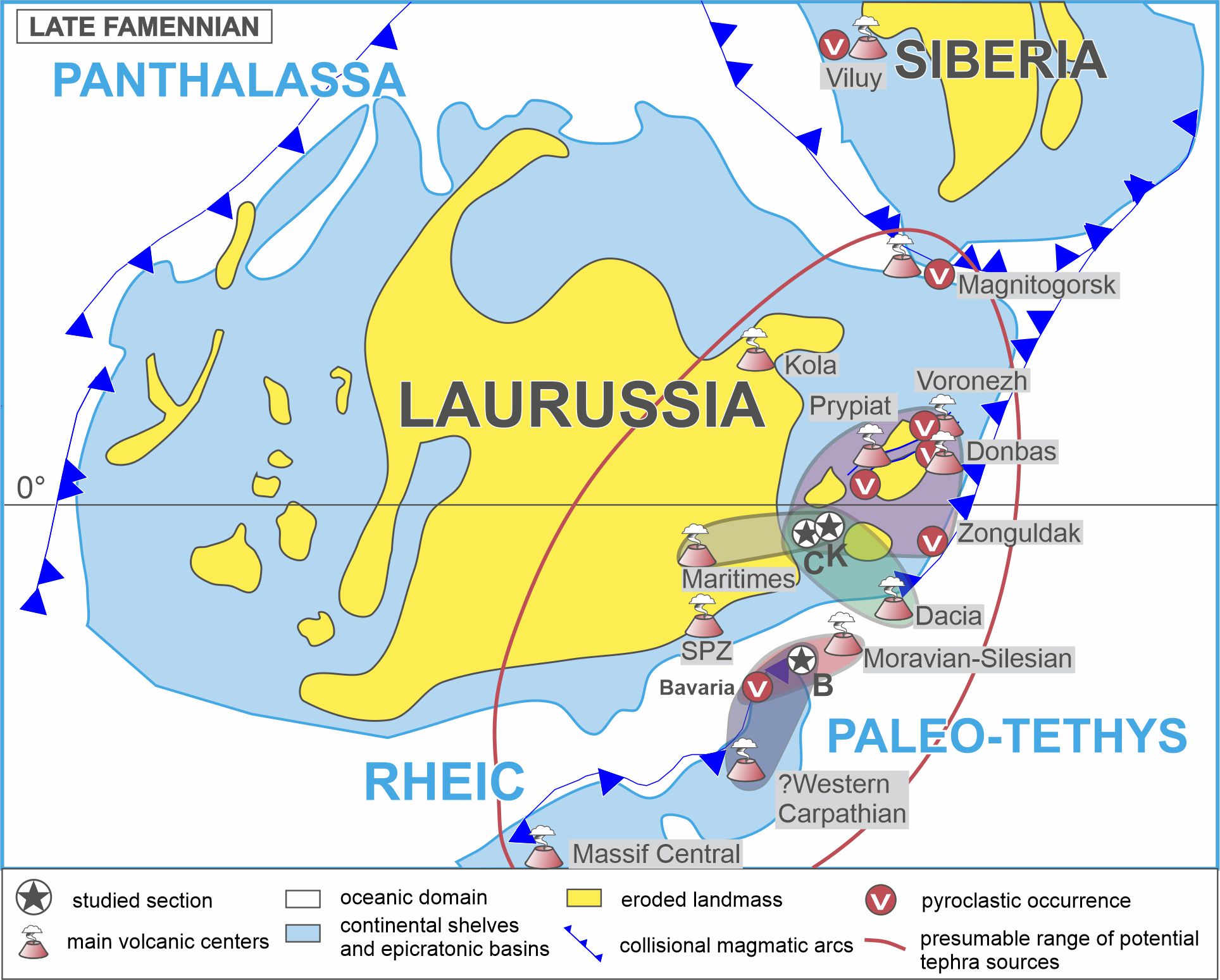In the November issue of the journal Earth-Science Reviews, a Polish-Czech team led by Dr. Agnieszka Pisarzowska published a paper on potential (proximal and distal) sources of volcanic ash associated with explosive Variscan volcanism in the Late Devonian.
The paper presents a detailed geochronological, geochemical, and mineralogical study of Middle and Upper Famennian tuffites from three sites in southern Poland: Holy Cross Mountains (Kowala), Kraków-Silesia monocline (Czatkowice, Dębnik anticline) and Sudetes (Bardo, Bardo Mountains). The Kraków-Silesia monocline and the Holy Cross Mountains areas were part of a wide carbonate shelf basin that extended along the southeastern margin of Laurussia in the Late Devonian, while Bardo was representing a tract of the waning Saxothuringian Ocean in the Peri-Gondwanan paleogeographic domain.
Based on U-Pb dating of zircons and monazites, the ages of pyroclastic rocks at Kowali (363.1 ± 4.8 Ma – from monazites) and Czatkowice (365.6 ± 2.9, 363.0 ± 3.5 Ma – from zircons and 363.4 ± 5.8 Ma – from monazites) were determined. The geochemical-mineralogical characterization of the tuffites indicated the presence of two groups of ashes genetically related to different geotectonic regimes. The first group, present in Kowali and Czatkowice, was formed in an extensional regime related to rifting. The most likely source area for the ash from Kowali and Czatkowice could have been the Late Devonian magmatic center in the Pripyat-Dnieper-Donets-Donbass rift. The second group of pyroclastics, found in Bardo, formed in the realm of active plate margins, probably in the Silesian-Moravian zone.
Details:
Pisarzowska, A., Paszkowski, M., Kołtonik, K., Budzyń, B., Szczerba, m., Rakociński, M., Sláma, J., Zagórska, A., Łaptaś, A. 2022. Geotectonic settings of Variscan explosive volcanism in the light of Famennian tuffites provenance from southern Poland. Earth-Science Reviews 234, 104218, 1–17. https://doi.org/10.1016/j.earscirev.2022.104218






